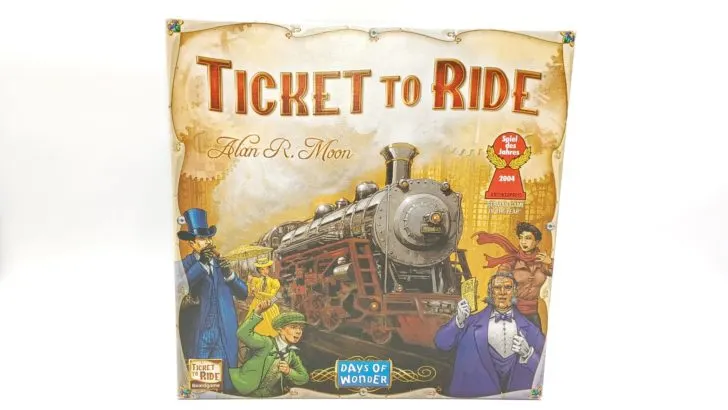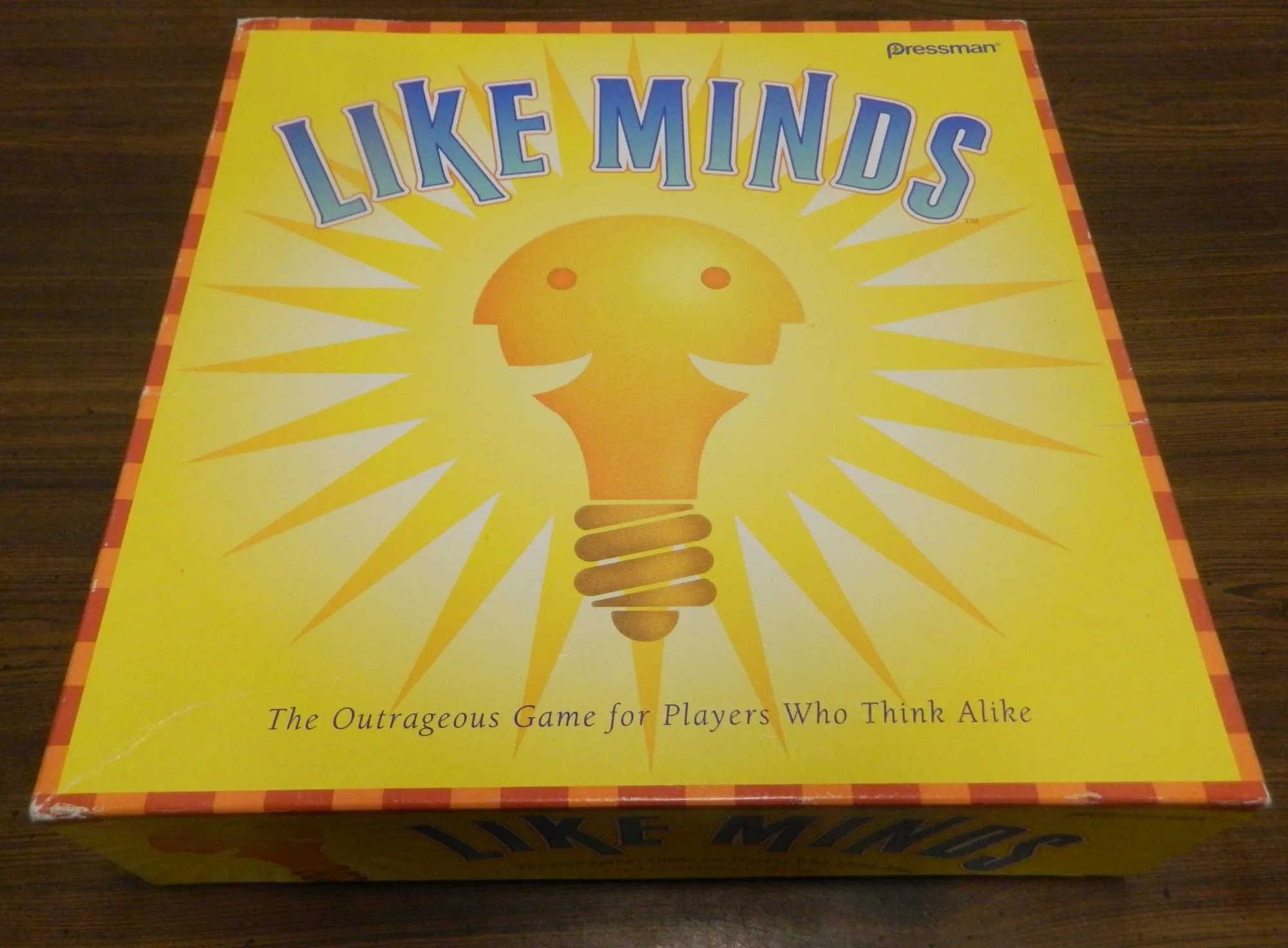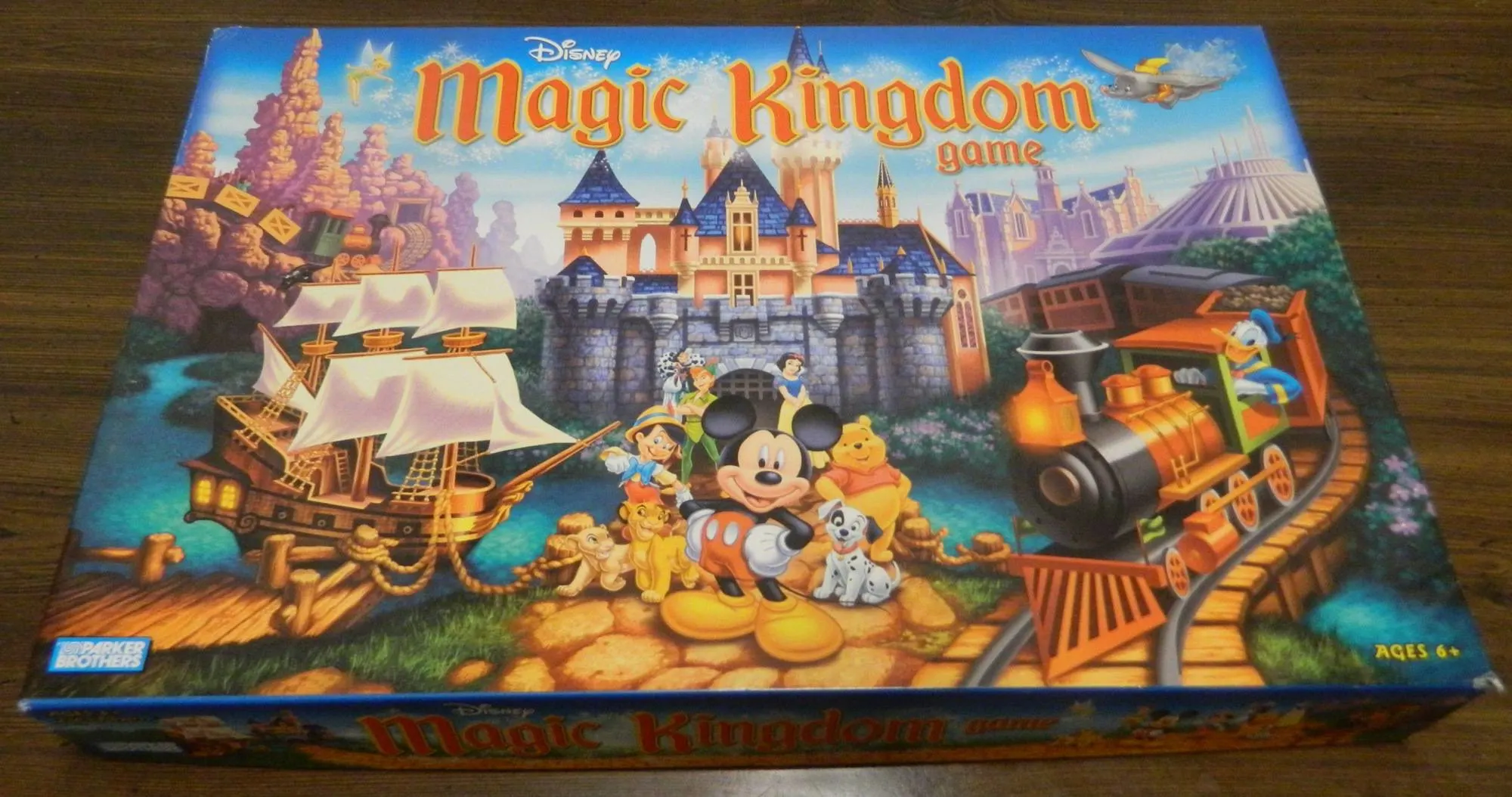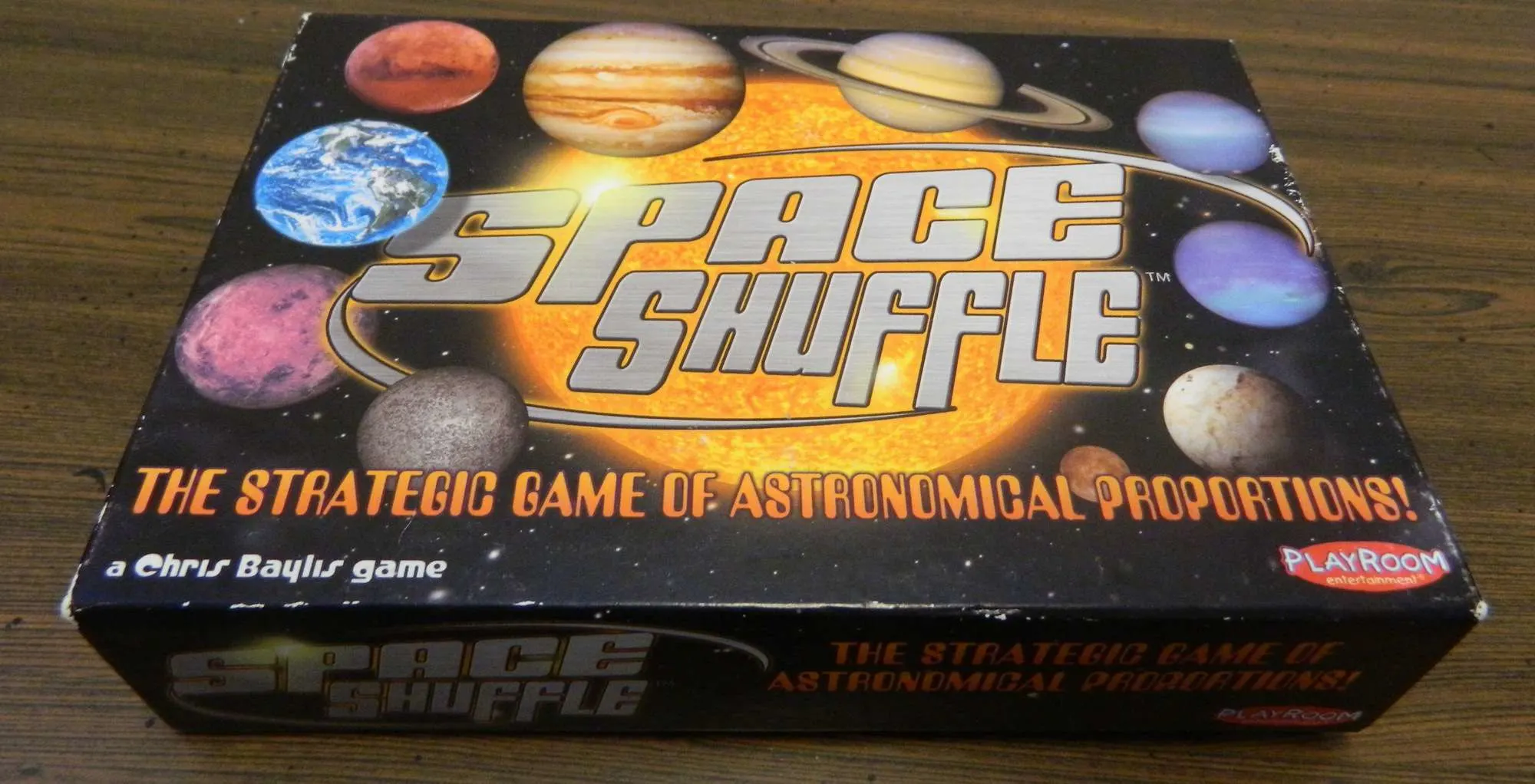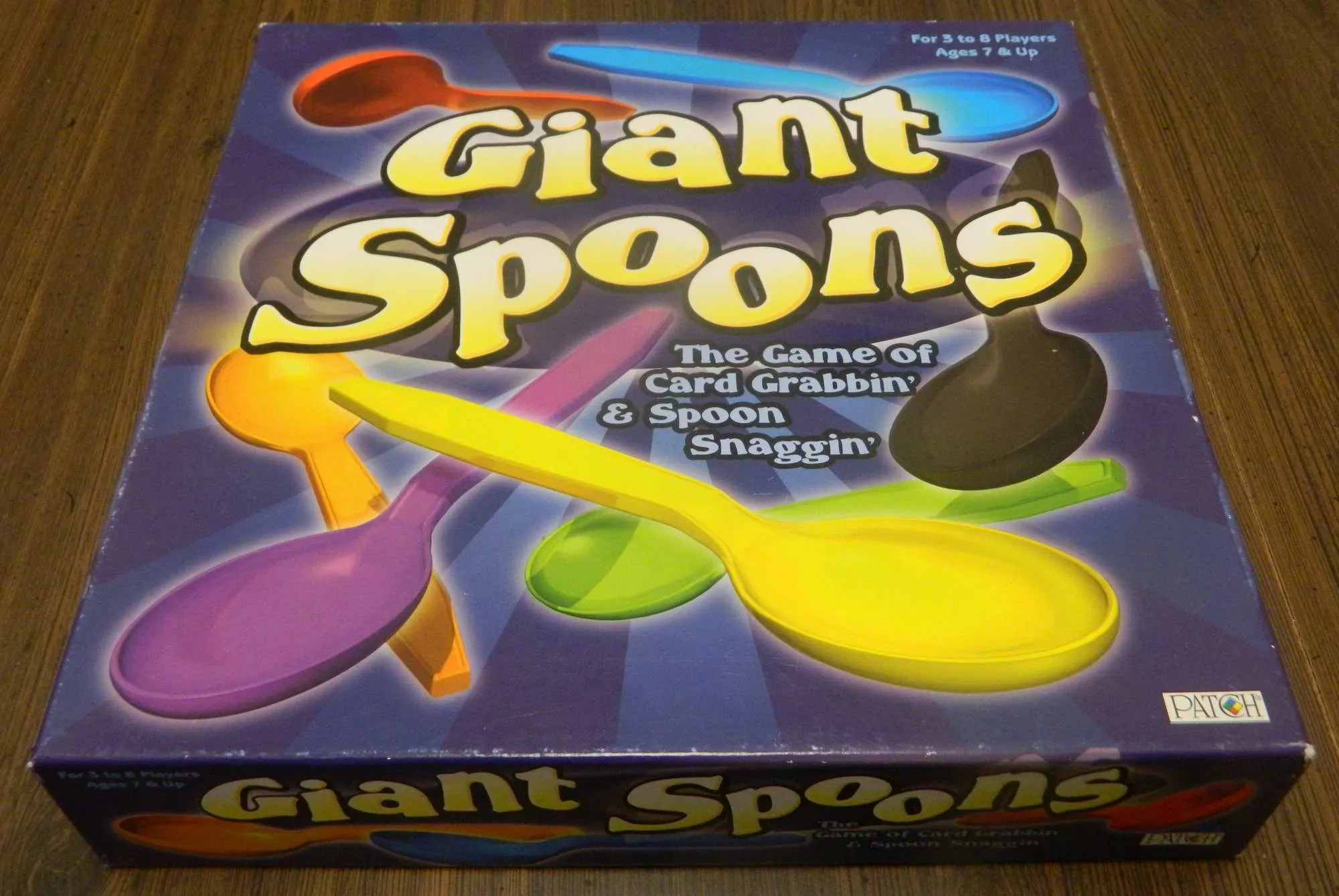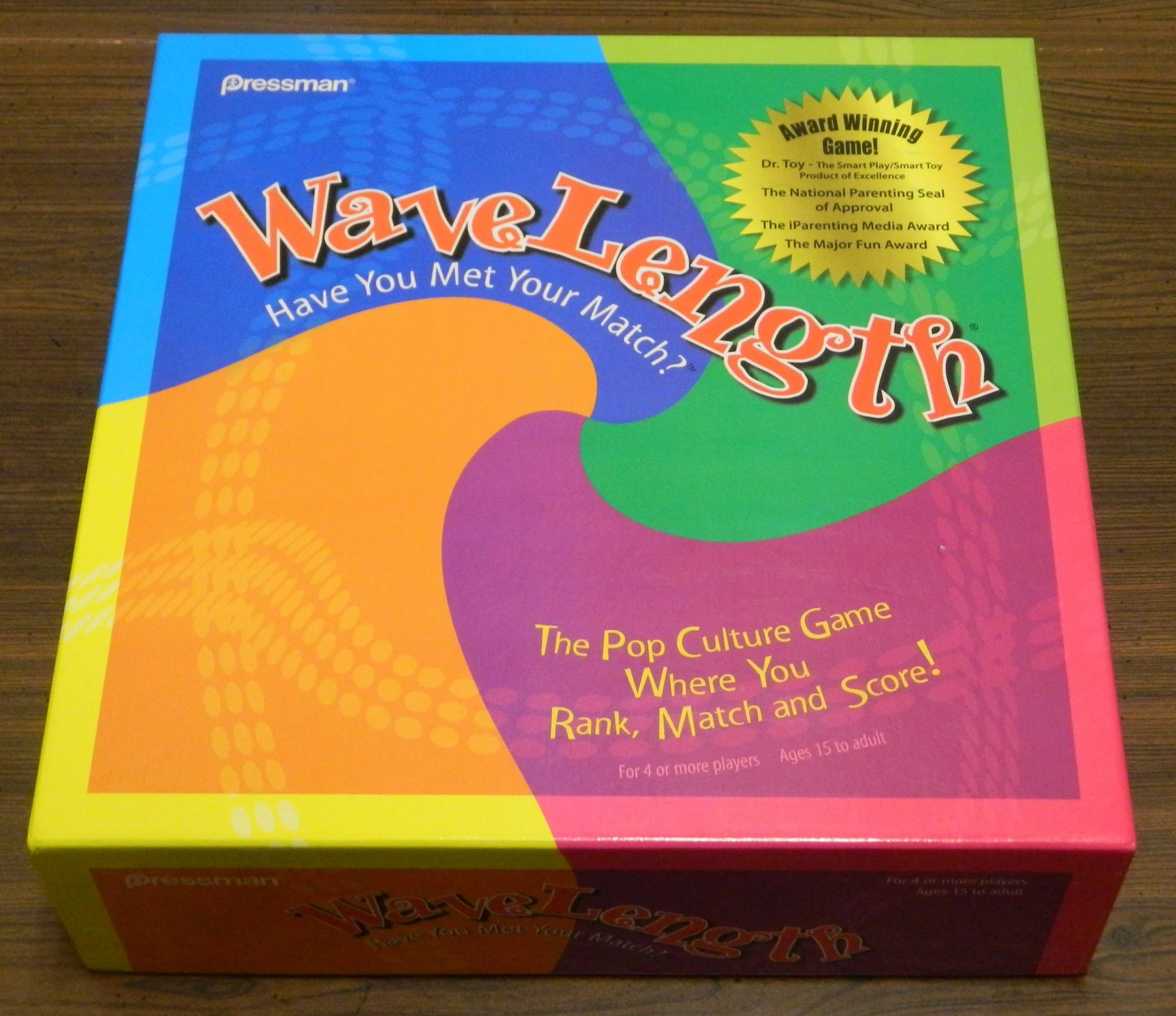Objective of Ticket to Ride
The objective of Ticket to Ride is to score the most points by claiming Routes, completing Destination Tickets, and creating the longest path of connected routes.
Setup for Ticket to Ride
- Place the gameboard in the middle of the table.
- Each player chooses a color and takes 45 trains and the Scoring Marker of that color.
- Each player places their Scoring Marker on the Start space.
- Shuffle the Train Car cards and deal four cards to each player to start their hand. Players can look at their own cards, but shouldn’t show them to the other players.
- Turn over the top five Train Car cards and place them face up on the table near the board. The rest of the Train Car cards form the draw pile.
- Place the Longest Path Bonus card face up near the board.
- Shuffle the Destination Ticket cards and deal three cards face down to each player. Each player will look at their Destination Ticket cards. They will choose which of these cards they would like to keep. They can either keep two or three of the cards. Players will keep secret what cards they decided to keep until the end of the game.
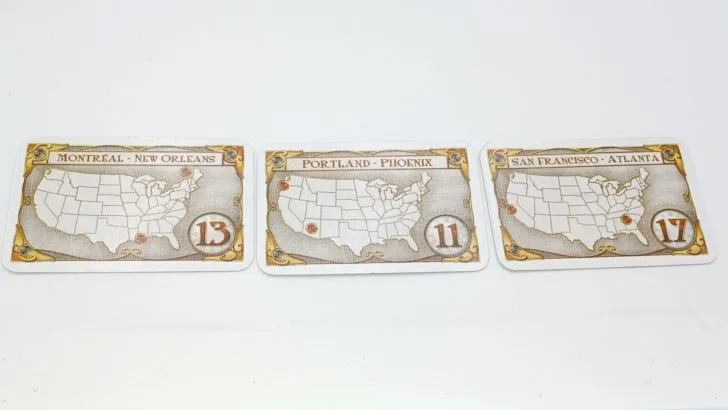
- Return any Destination Ticket cards that you don’t want to the bottom of the corresponding deck. Place the Destination Ticket card deck near the gameboard.
- The player that is the most experienced traveler goes first. Play proceeds clockwise throughout the game.
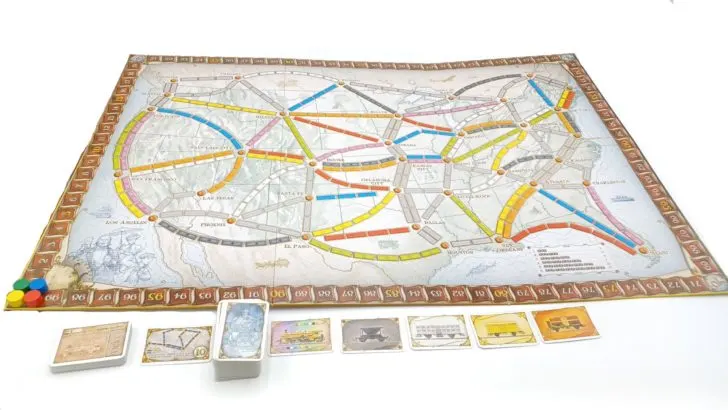
Playing Ticket to Ride
The players will take turns throughout the game. On your turn you will choose one of the following actions to take.
- Draw Train Car Cards
- Claim a Route
- Draw Destination Tickets
Draw Train Car Cards
When you choose to draw Train Car cards, you will get to add two cards to your hand. You can choose Train Car cards from two different areas.
Near the board there are five face up Train Car cards. You can choose one of these cards to add to your hand. If you choose one of these cards, you will reveal the next card in the draw pile in order to replace the card you took.
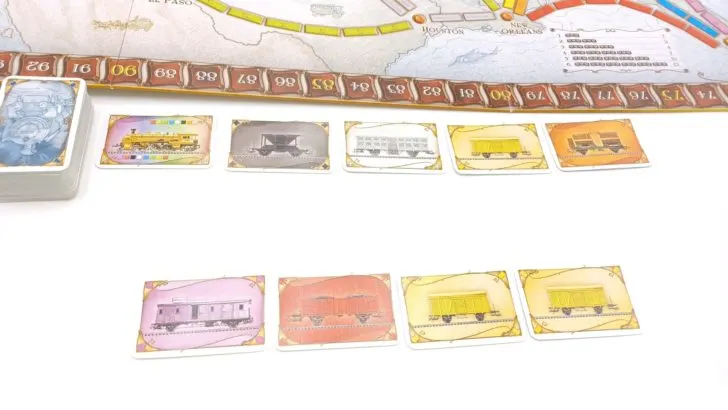
Your other option is to take the top card from the draw pile.
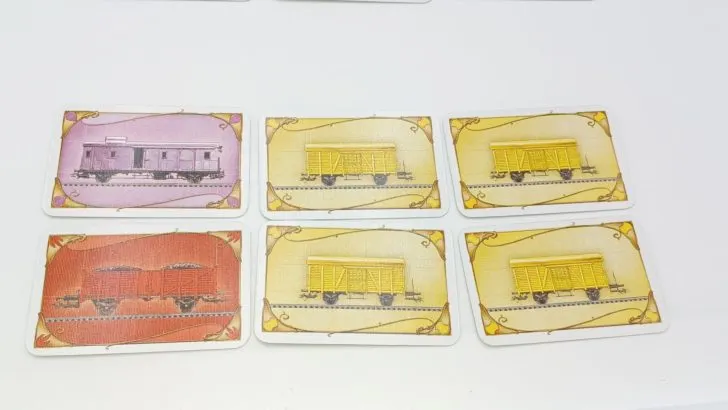
When choosing which two cards that you would like to take, you can choose to take two cards from the same area or you can choose one card from both areas.
If you choose to take a Locomotive card (see below) from the face up area on the table, you will only get to take one card on your turn. Should you draw a Locomotive card from the draw pile (it was face down before you drew it), you can draw a second card.
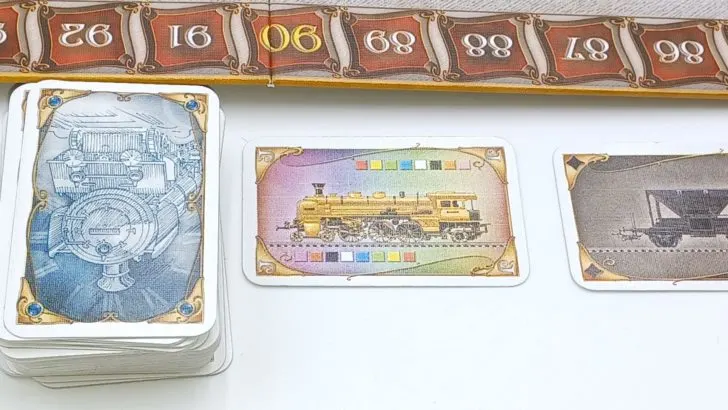
Should the draw pile ever run out of Train Car cards, you will shuffle the discard pile in order to form a new draw pile. If there are no cards left to be shuffled (the players are hoarding them), you cannot draw Train Car cards on your turn.
Ticket to Ride Train Car Cards
There are two different types of Train Car cards in Ticket to Ride.
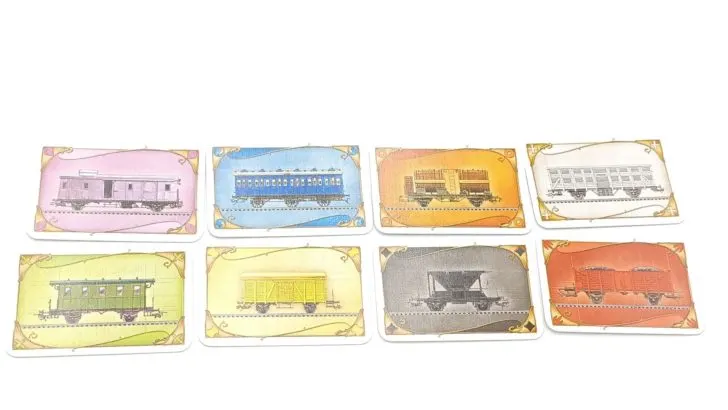
Most of the cards are considered regular Train Card cards. These cards come in various colors including purple, blue, orange, white, green, yellow, black, and red.
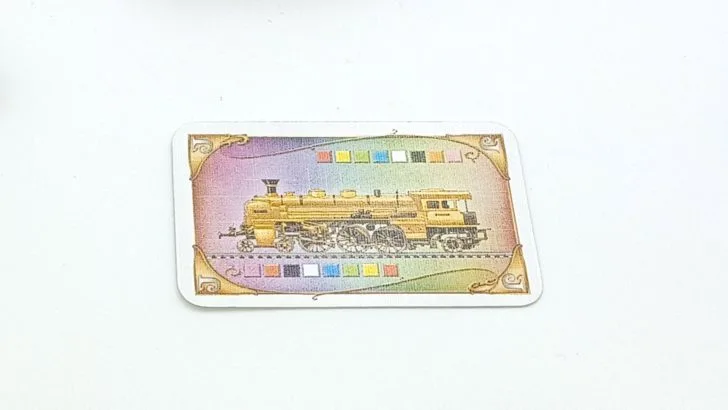
Locomotives are multicolored cards. These cards act as wilds in the game. When you play these cards they can act as any other color when claiming routes.
If at any time three of the five face up cards are Locomotives, you will discard all five of the face up cards. You will reveal five new face up cards.
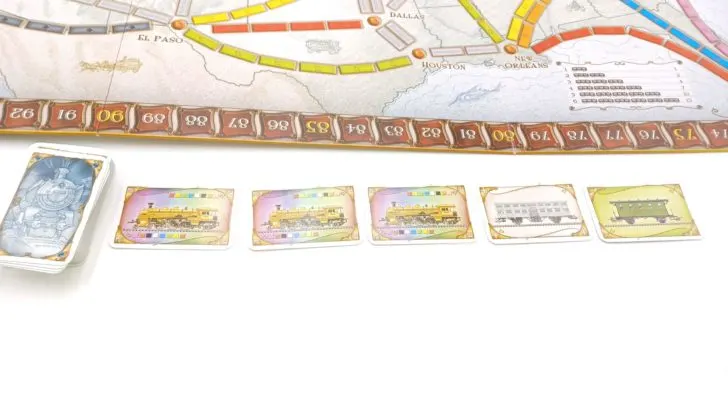
There is no limit to the number of Train Car cards that you can hold in your hand at a time.
Claiming A Route
Much of Ticket to Ride’s gameplay is built around claiming routes. Between each city on the gameboard are colored rectangles. The rectangles connecting one city to another is called a route.
When a player wants to claim a route they can use their current turn’s action to claim one route.You may choose any route on the board. You do not have to connect to a route that you previously claimed.
Normal Routes
To claim a route you count up the number of spaces between the two cities. You must play a number of Train Car cards from your hand equal to the number of spaces between the two cities. These cards must match the color of the route that you are trying to claim.
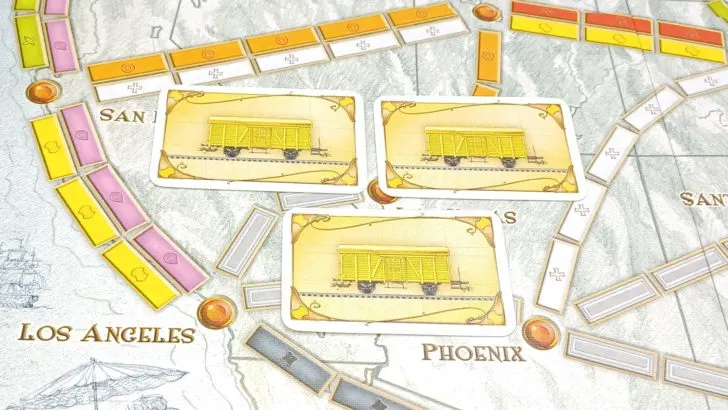
Gray Routes
You can use any color Train Car cards to claim a route consisting of gray spaces. All of the cards that you play though must be the same color.
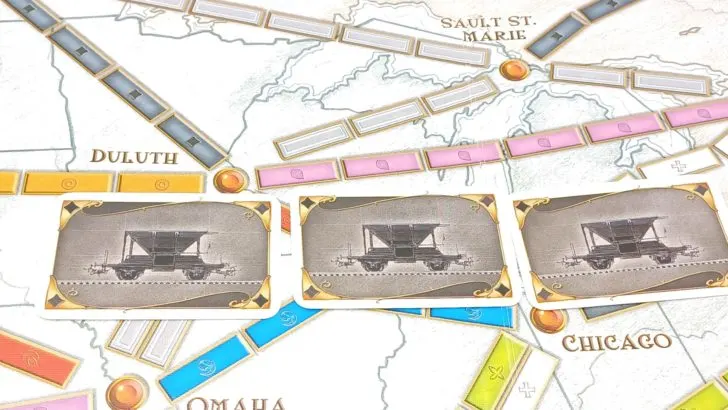
Using A Locomotive Card
You can use Locomotive cards as a card of any color when claiming a route.
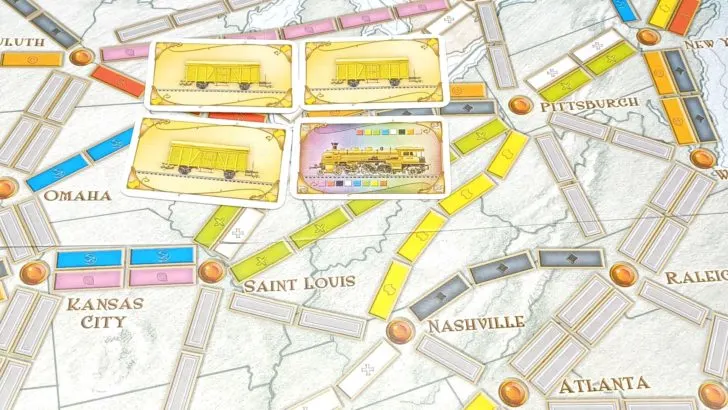
Placing Your Train Cars
When a player claims a route they will discard the cards they played from their hand. They will then place one of their plastic trains on each space of the route that they claimed. This player now owns this route for the rest of the game.
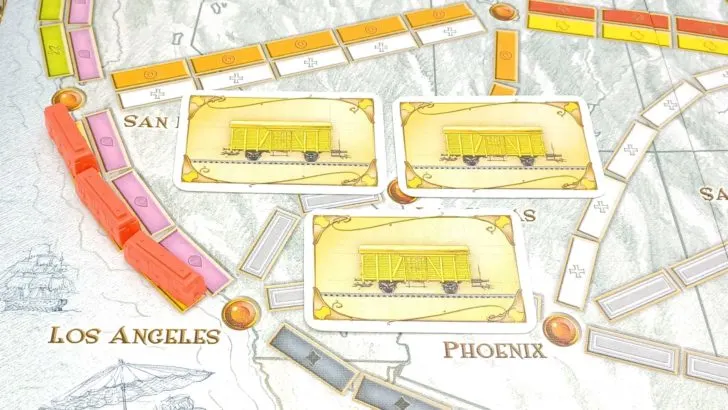
Double Routes
Some cities have two routes connecting them. These are called Double-Routes. Each player may only claim one of the Double-Routes for each connection. You must leave the other route for another player to claim. If there are only two or three players in the game, players may only claim one of the two routes in the Double-Route. Once the first route is claimed, the other route is closed to the other players.
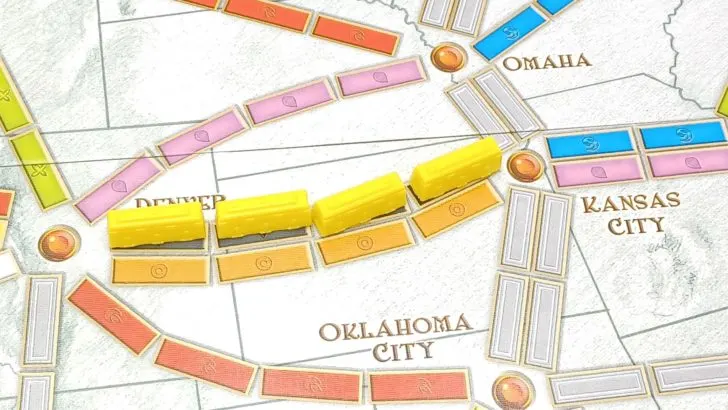
Scoring A Route
When you claim a route you will score points from it. The number of points that you score depends on the length of the route.
- 1 Train – 1 point
- 2 Trains – 2 points
- 3 Trains – 4 points
- 4 Trains – 7 points
- 5 Trains – 10 points
- 6 Trains – 15 points
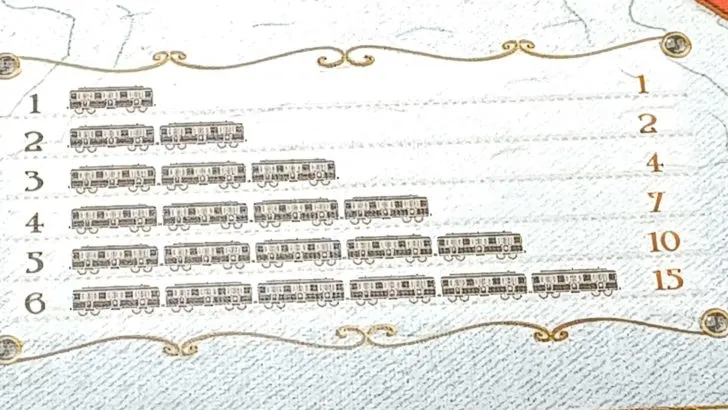
To keep track of the points you earn in the game, you will move your Scoring Marker along the Scoring Track around the edges of the gameboard.
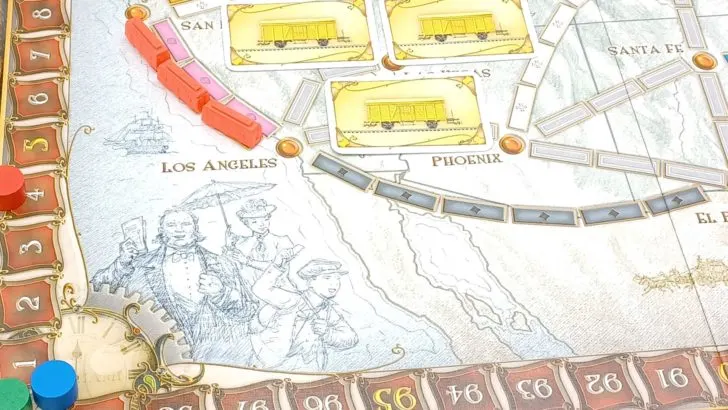
Draw Destination Ticket Cards
The last option you have is to draw Destination Ticket cards. When you choose this option you will draw three new cards from the top of the Destination Ticket deck. You do not have to complete all of the Destination Tickets that you already own in order to take this action. If there are less than three Destination Ticket cards left in the deck, you will only draw the cards that are remaining.
You will look through the three cards to see which of them you would like to keep. You must keep at least one of the three cards, but you can choose to keep two or all three of the cards though.
Add the cards you decided to get rid of to the bottom of the Destination Ticket deck.
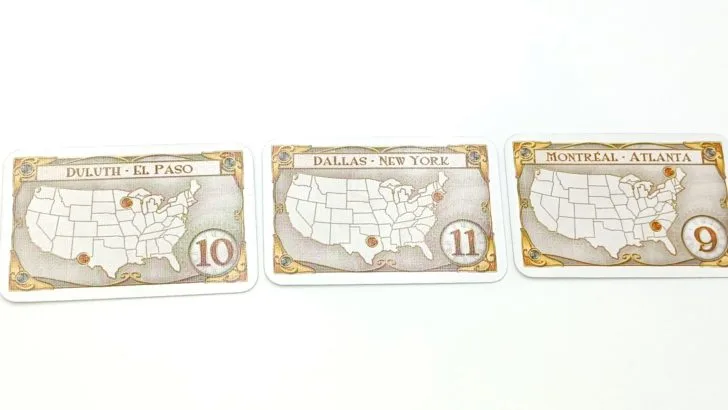
Destination Ticket Cards
Each Destination Ticket card features two different cities on it and a point value. The goal is to create a path of routes that connect these two cities together. When connecting these two cities you don’t need to take a direct path. As long as the two cities are connected in one continuous path, they are considered connected.
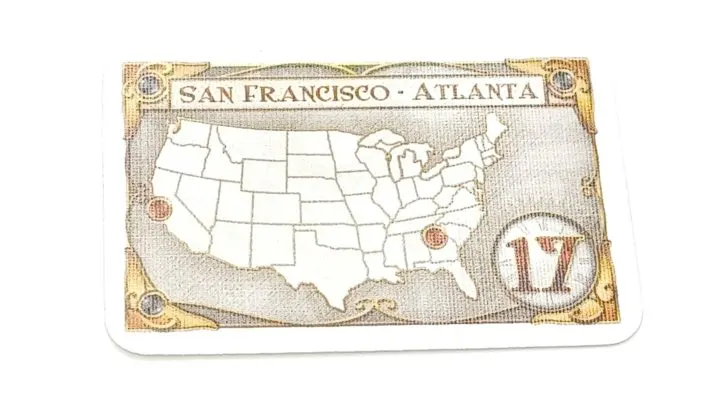
If you successfully connect the two cities on a Destination Ticket card, you have completed the card. At the end of the game you will score points equal to the number printed on the card. You will not score the points for the card until the end of the game though as you should keep your Destination Ticket cards secret from the other players.
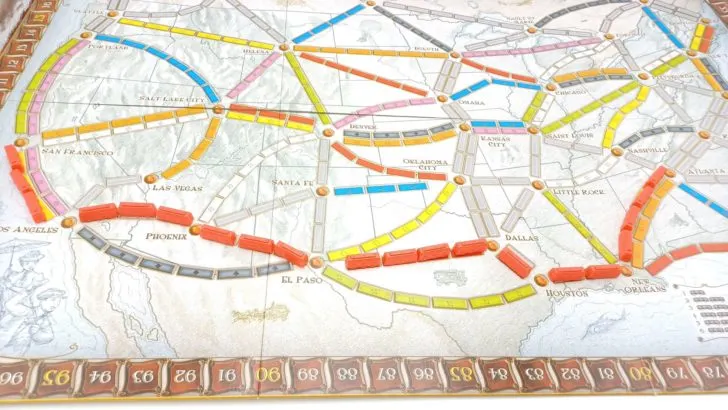
Should you fail to connect the two cities on a Destination Ticket card by the end of the game, you will lose points equal to the number printed on the card.
A player may take as many Destination Ticket cards as they want. You should try to limit the number of cards you take though as you will lose points from any that you fail to complete.
End of Ticket to Ride
The end game for Ticket to Ride triggers when one of the players only have 0-2 plastic trains left at the end of their turn. Each player including the player with only 0-2 plastic trains gets one last turn. The game then moves onto final scoring.
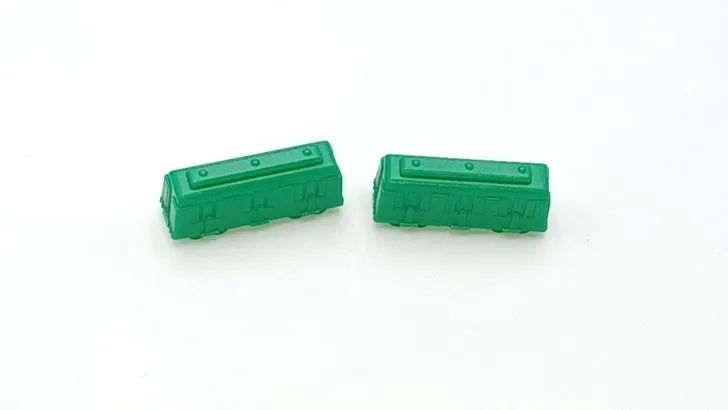
Final Scoring in Ticket to Ride
To determine who wins Ticket to Ride each player will tally the number of points they earned in the game. You can score points in three different ways.
Scoring Routes
First you will score points for each of the routes that you claimed. At the end of the game this total should be reflected in the current position of each players’ Scoring Marker. To make sure no mistakes were made though, you may want to recount the number of points each player earned from the routes they claimed during the game. If there are any mistakes you should adjust the scoring marker to the correct total.
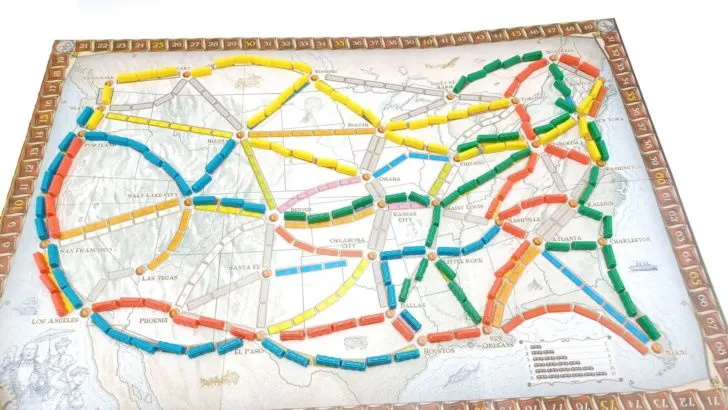
Scoring Destination Tickets
Next each player reveals all of the Destination Tickets they took during the game. Each player will add or subtract the amount of points that they earned from each of the cards that they took. See the Destination Ticket Cards section above for more details.
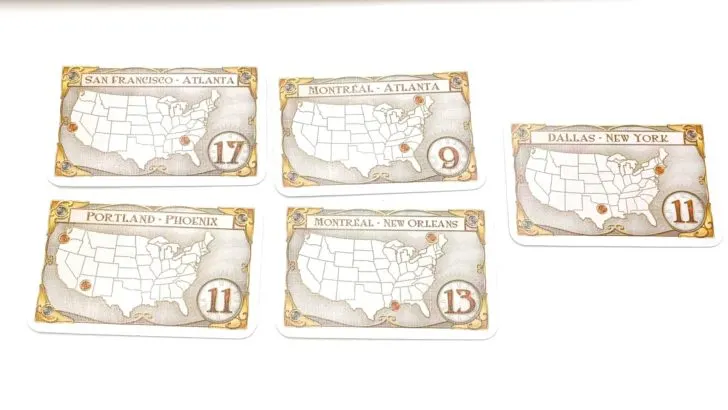
Scoring the Longest Continuous Path
Finally the players will determine who created the Longest Continuous Path. Each player finds their longest connected set of plastic train cars and counts up how many trains are in it. Your longest path can loop and pass through the same city multiple times. You may not use the same plastic trains multiple times though when determining your longest path. The player that created the Longest Continuous Path receives ten points. If there is a tie for the Longest Continuous Path, all of the tied players score the ten points.
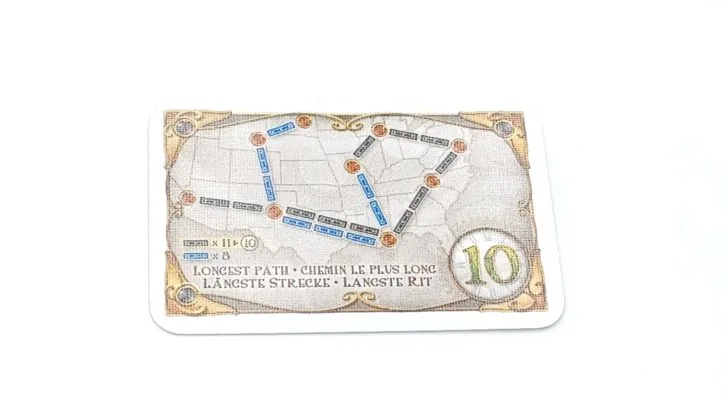
Determining the Winner
Each player compares their point totals. The player that scored the most points wins the game. If there is a tie, the tied player that completed the most Destination Tickets wins. If there is still a tie, the tied player with the Longest Continuous Path card wins.
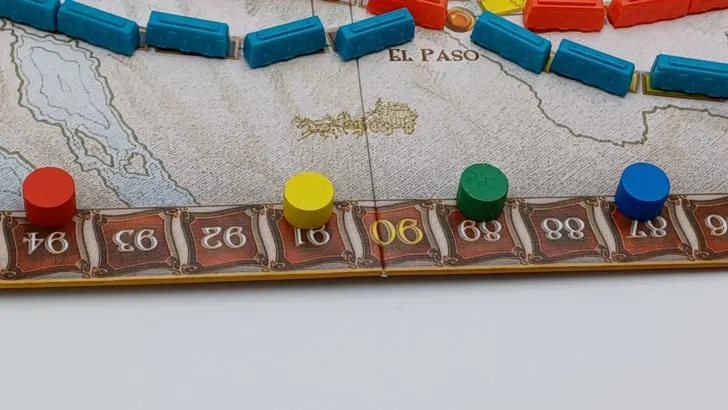
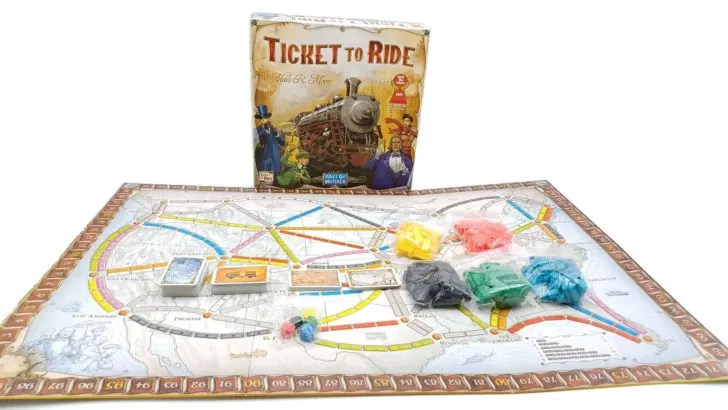
Ticket to Ride
Year: 2004 | Publisher: Days of Wonder | Designer: Alan R. Moon | Artist: Cyrille Daujean, Julien Delval
Genres: Family, Set Collection, Network and Route Building
Ages: 8+ | Number of Players: 2-5 | Length of Game: 45-60 minutes
Difficulty: Light-Moderate | Strategy: Moderate | Luck: Light-Moderate
Components: gameboard, 240 plastic trains (45 of each color plus some extra replacement trains), 110 Train Car cards (12 of each color and 14 Locomotives), 20 Destination Ticket cards, Longest Continuous Path Bonus card, Summary card, 5 Scoring Markers, instructions
Where to Purchase: Amazon, eBay Any purchases made through these links (including other products) help keep Geeky Hobbies running. Thank you for your support.
For more board and card game how to plays/rules and reviews, check out our complete alphabetical list of board game posts.

